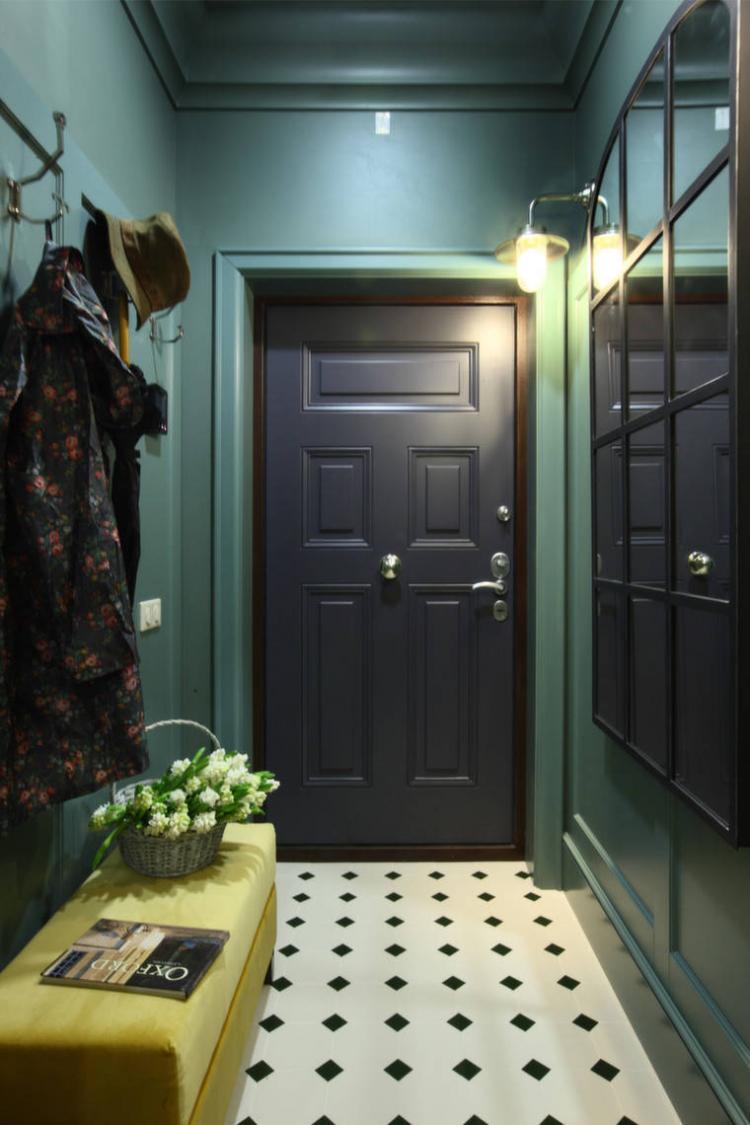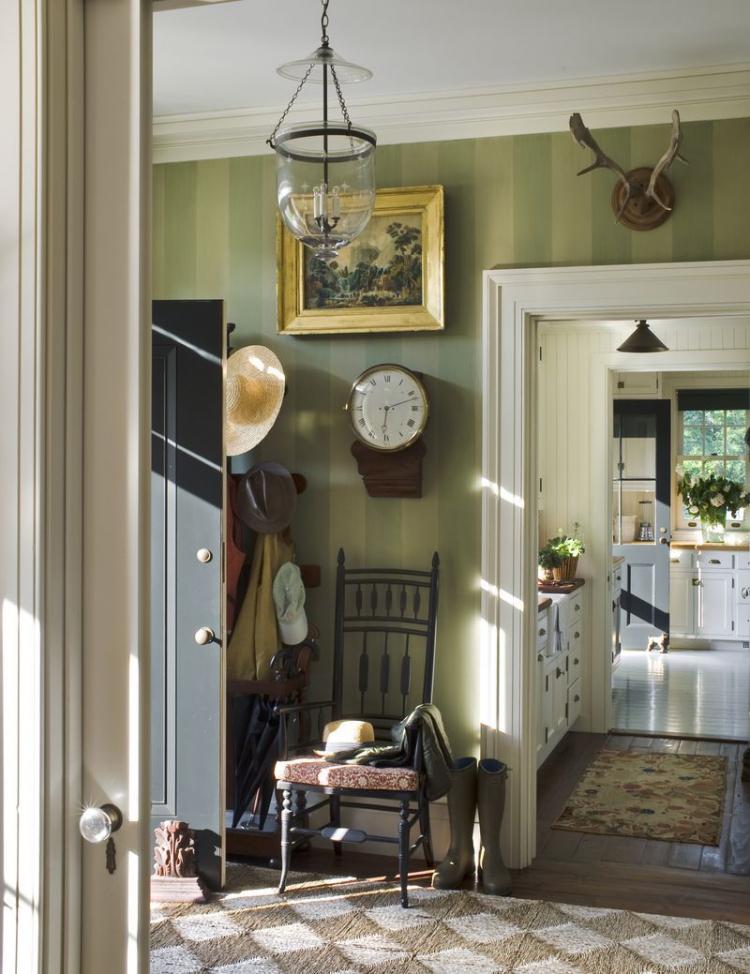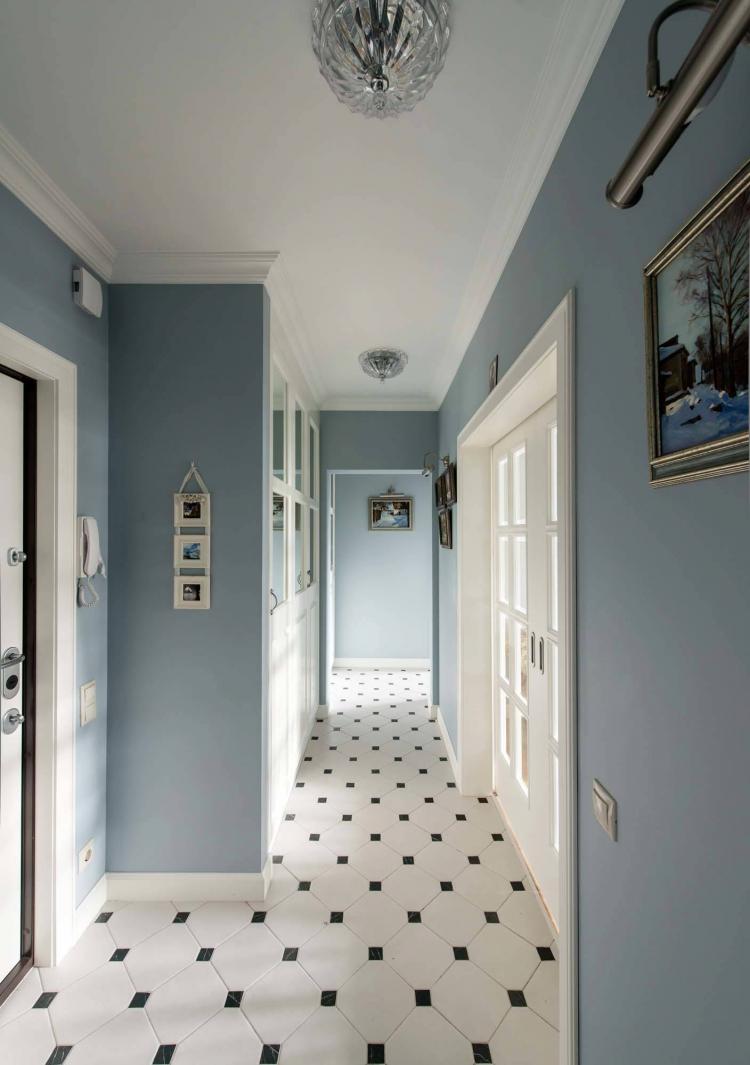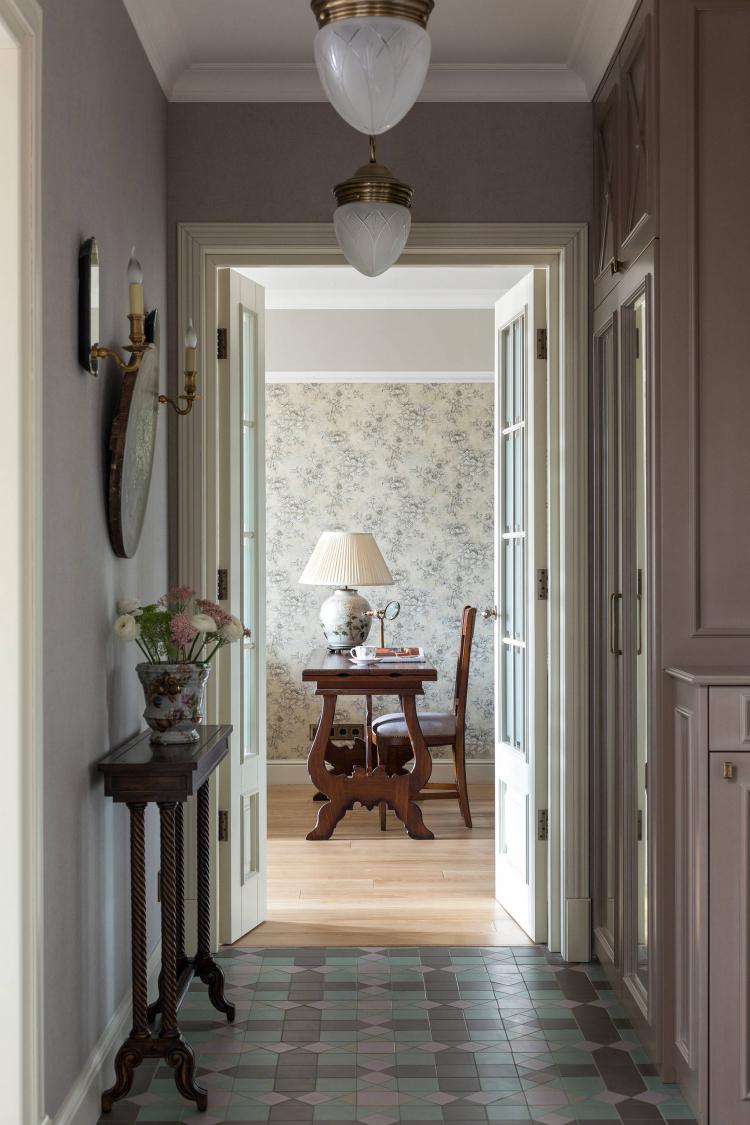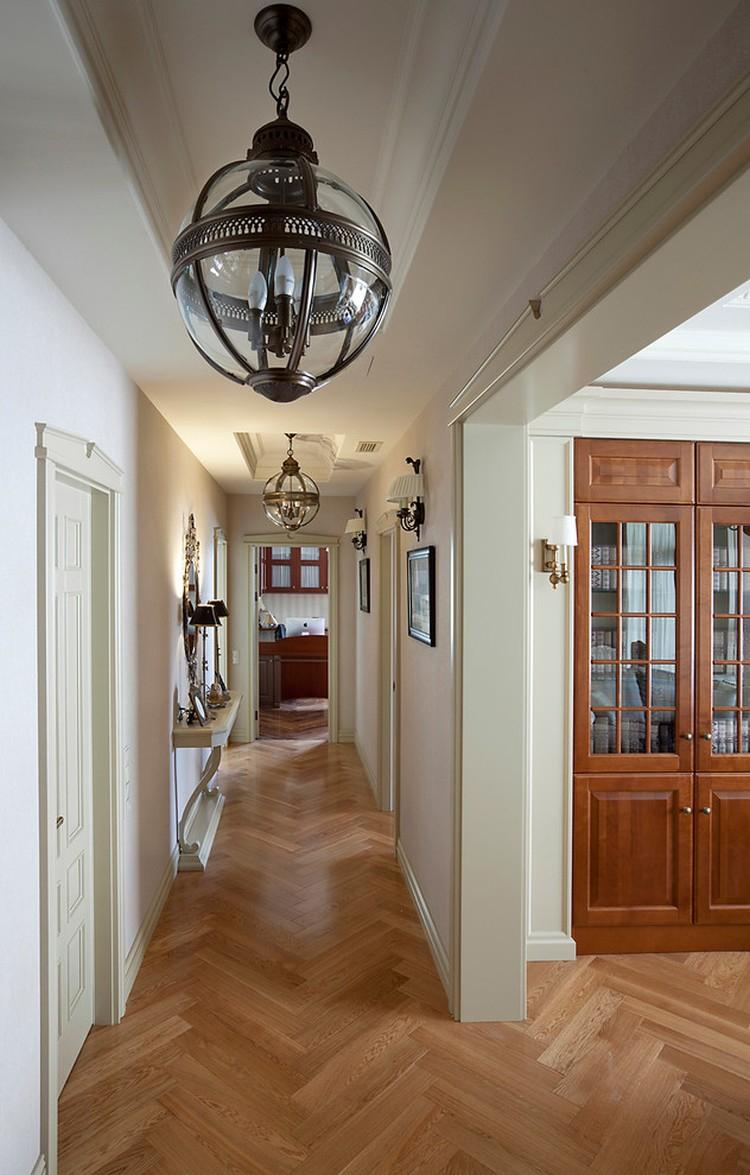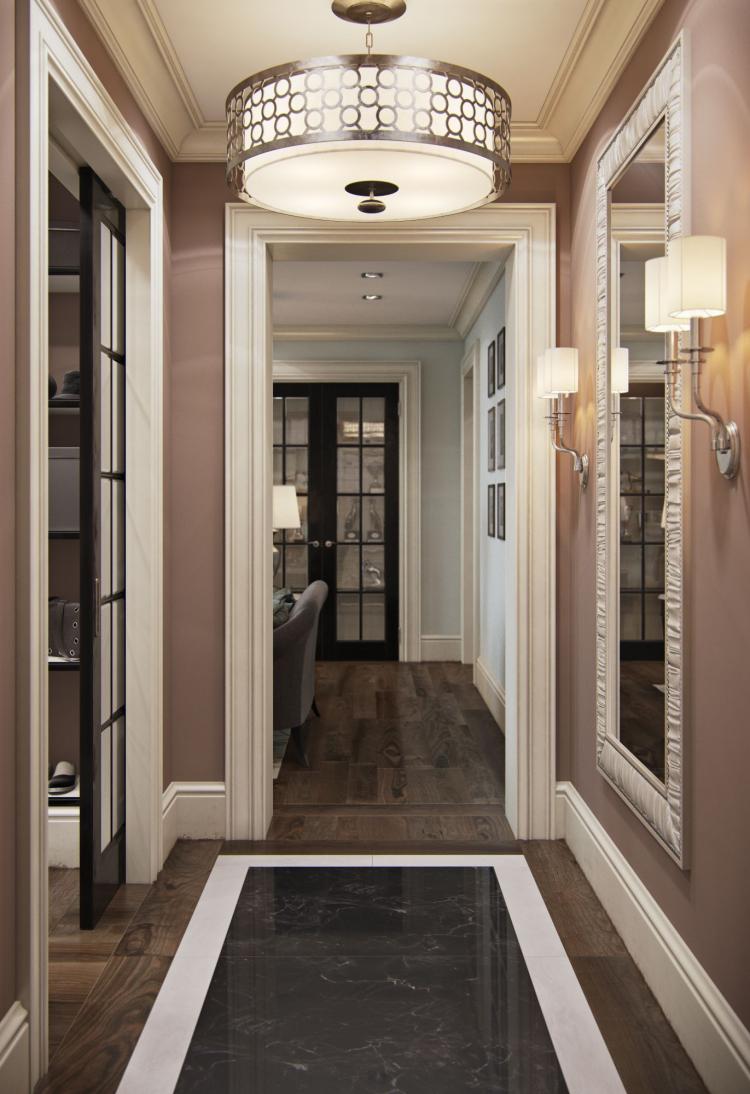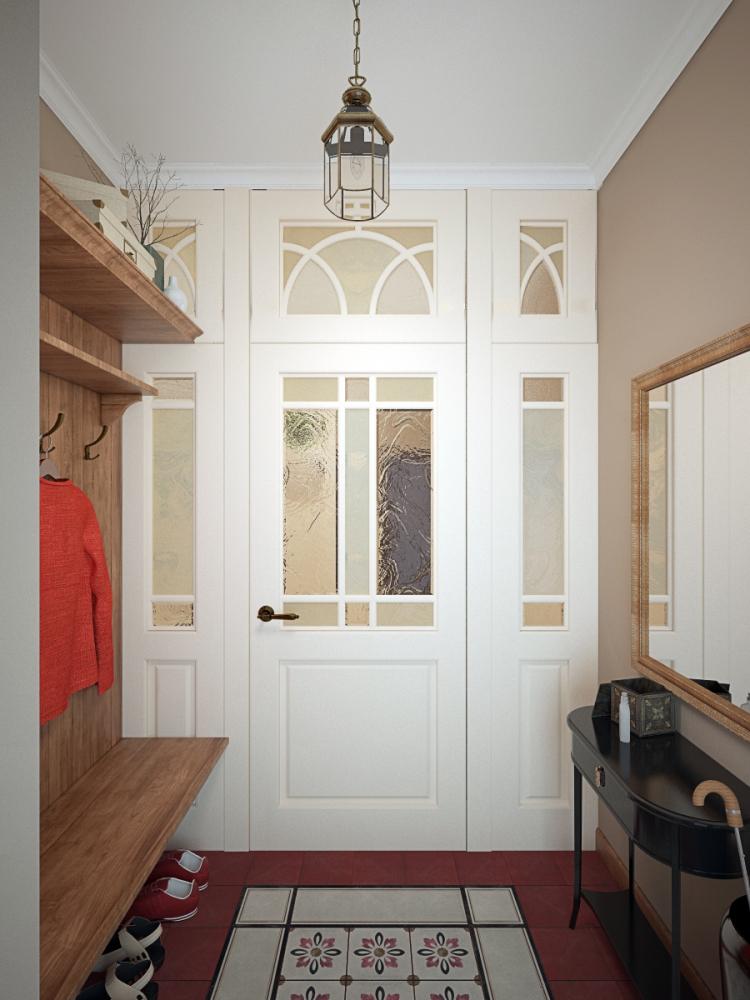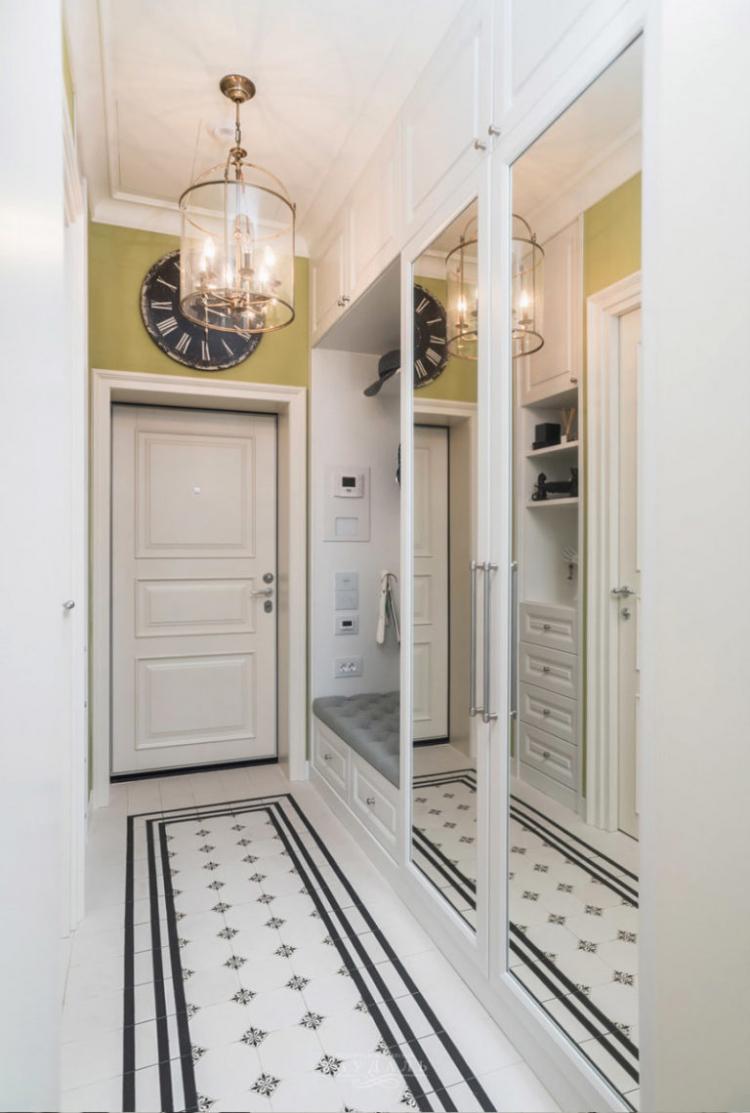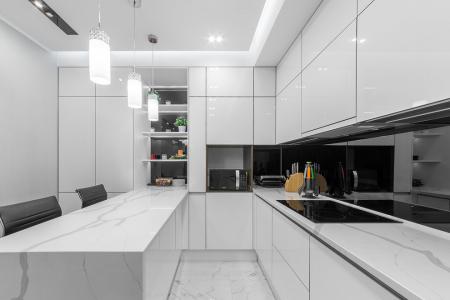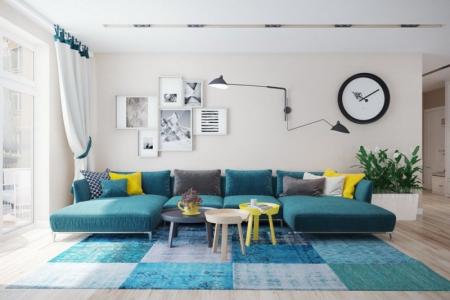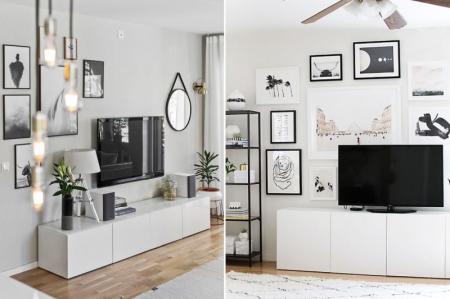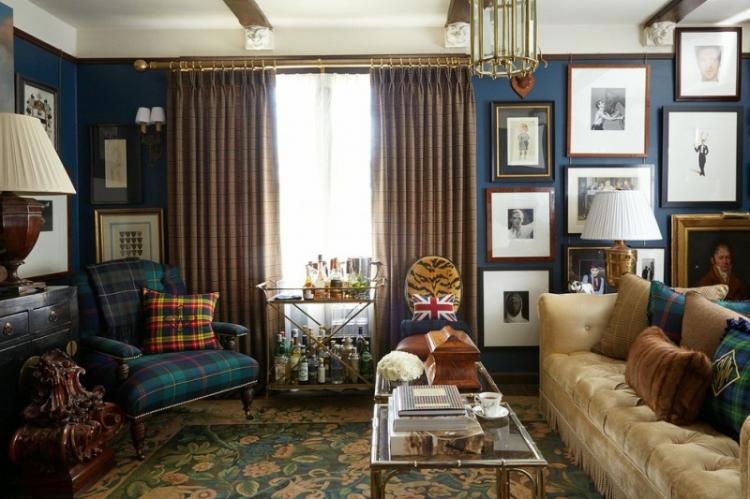
The English style combines several styles and expressions of art that flourished in England from the Middle Ages to the present day. In fact, this is a mixture of different eras, especially the Victorian and Georgian styles, which eventually became classics. Interiors in the English style evoke thoughts of majestic and noble aristocratic castles.
Features of the English style
The beginning of the Georgian era dates back to 1714. At this time, the echoes of Ancient Greece and Rome were clearly manifested in the English style. The interiors were practical, proportional and symmetrical, and the color scheme was chosen taking into account the cardinal points. Borrowings from oriental cultures were clearly traced: India, China, Japan. The influence of the Rococo style was also felt.
In 1837, the Victorian era began, and with it the active development of industry. British colonies spread throughout the world, and the bourgeois class grew rapidly richer. Items that were previously available only to a select few have come into fashion. The interiors became more luxurious and pointedly emphasized the wealth of the owners.
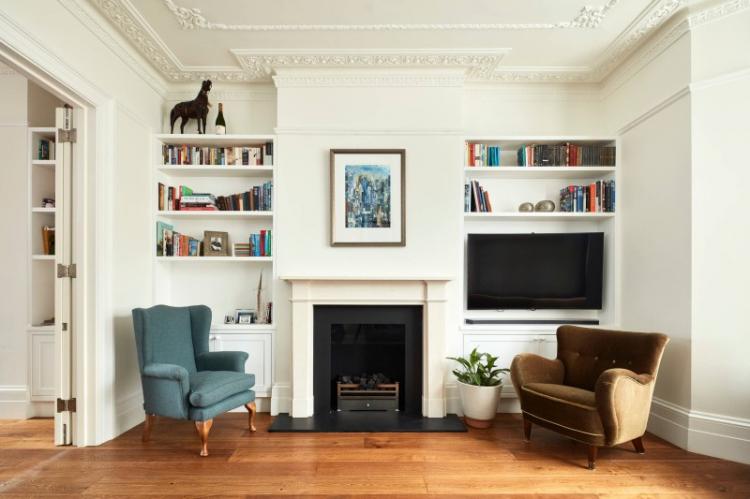
The father of modern English style is William Morris. He managed to find a middle ground between the heritage of aristocracy and technical progress. The following common features are traced in the interiors:
- Tradition and simplicity. All premises clearly correspond to their purpose. Living rooms combined with kitchens or bedrooms combined with offices are practically not used. Partitions are not used either. All zoning is only with the help of lighting and composition;
- Pragmatic. The British are renowned for their solid approach and love of impeccable quality. It is functionality and reliability that come to the fore. At the same time, the interior elements themselves can be brought from all over the world;
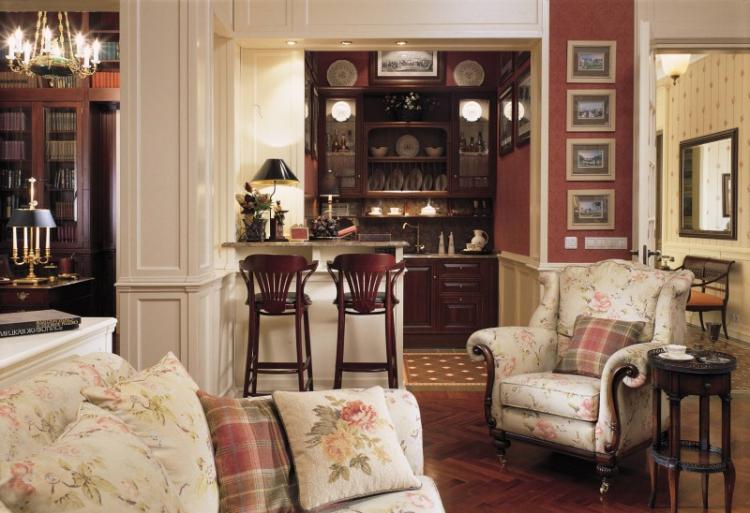
- Floral romanticism. In addition to general trends, William Morris left behind a number of unique ornaments and motifs. These are restrained, but bright floral and floral patterns for textiles and wallpapers;
- Lightness and monumentality. Massiveness and elegance are masterfully combined in English interiors. Rigid statics and symmetry are diluted with fancy decor and fittings. For example, a heavy sofa with expensive upholstery stands on graceful curved legs and is decorated with flirty armrests;
- Integrity. Combining the opposite and the incongruous, the English interiors remain calm and intimate. Diverse elements fit together due to the same textures and repetitive motives.
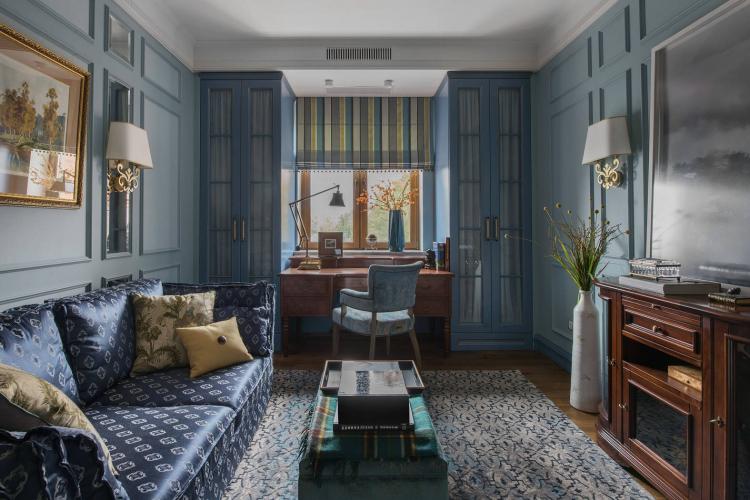
Materials and design
Interiors in the English style are an abundance of wood, especially dark wood species. Previously, even wooden wall and ceiling panels were actively used. The most popular species are luxurious mahogany or bog oak.
Floor finishing
For the floor, type-setting parquet is suitable, less often - a laminate with imitation of valuable species. Floors made of floorboards remain relevant. The main thing is to preserve the texture of the wood. In rooms with high humidity, tiles are used.
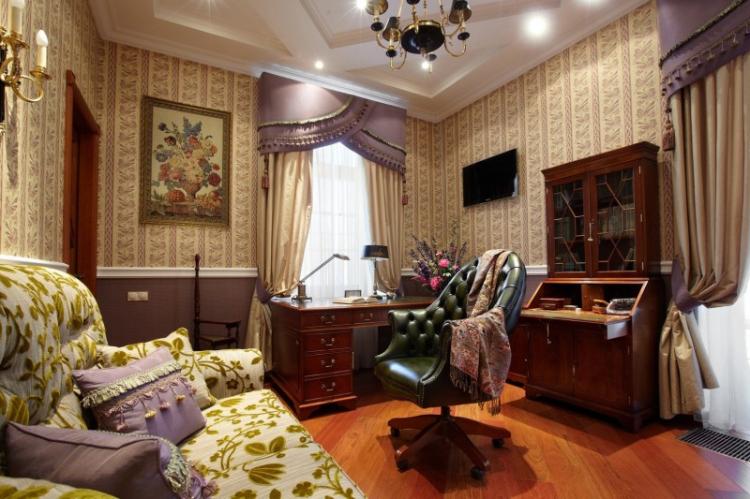
Wall decoration
For wall decoration, carved oak panels or plain wallpaper, possibly with barely noticeable small floral patterns or striped, are suitable. The color scheme is light and calm. Decorate the walls with paintings, prints, and real tapestries for variety. Collectible series of paintings, tableware, decorative trifles will harmoniously fit in.
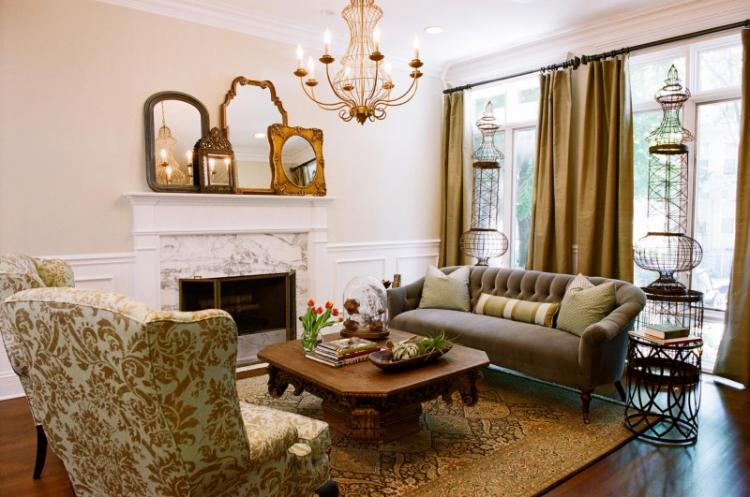
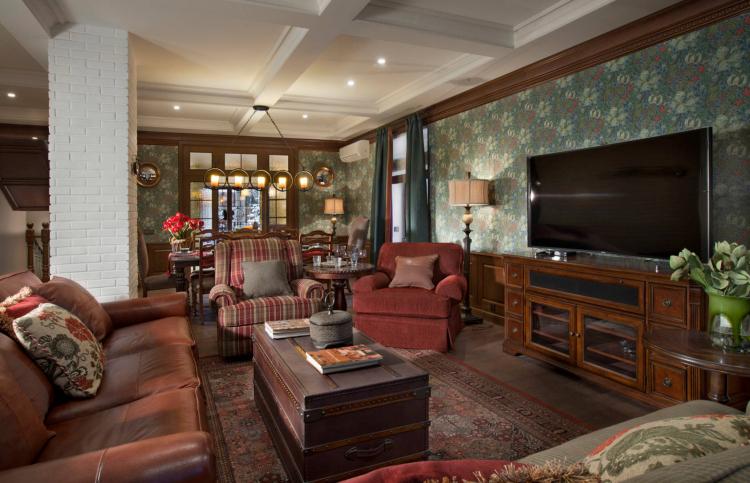
Ceiling design
The ceilings are classic white. If space permits - with beams, complex plasterboard structures, wide cornices and rosettes for a chandelier. Tensioning systems are rarely used. Most often these are matte and satin canvases.
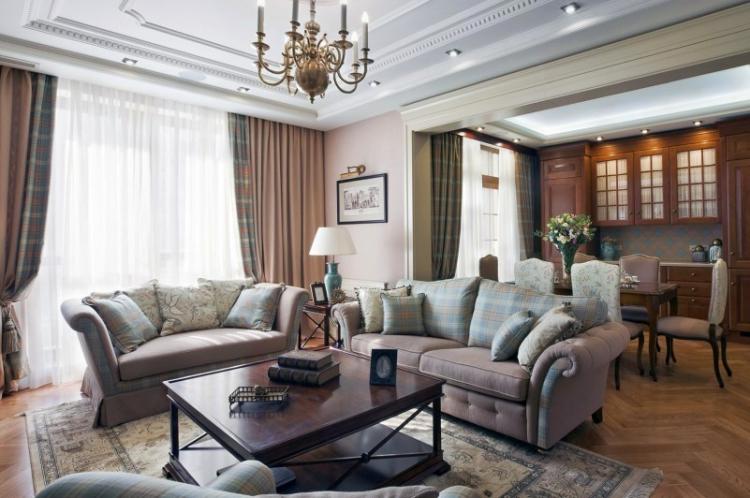
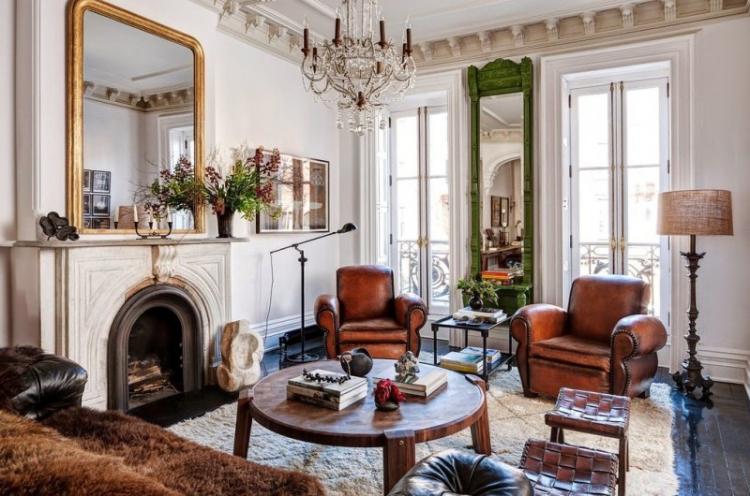
Decor and textiles
Classic antique accessories are popular in the decor: chests, globes, stuffed animals, aged maps instead of paintings. If space and layout permits, a fireplace or a classic wood-burning stove will fit perfectly.
The decor is made of marble, limestone or carved wood, and around are large mirrors in massive gilded frames. You can decorate the room with sculptures. For the decoration of windows, volumetric heavy curtains with lambrequins, fringes and tassels are used.
Decorative pillows are also popular. The main textiles are velvet, damask, genuine leather. These are expensive, dense materials with a luxurious texture. In residential premises, solid, massive carpets are used. For the bedroom, plain ones with high pile are suitable, for the living room - more practical floral ones.
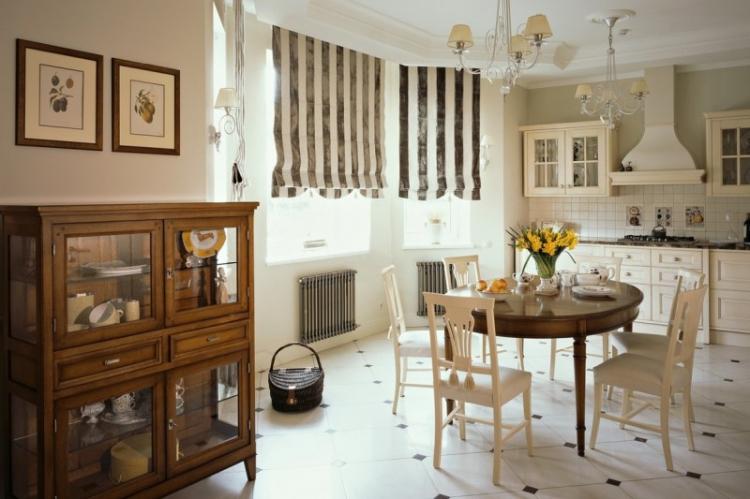
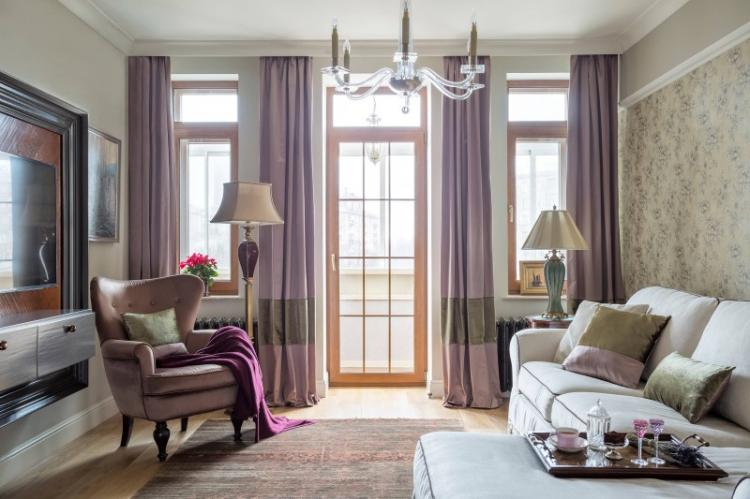
English style furniture
Furniture for such interiors is massive and solid, but very decorated. In use - cornices, pilasters, brass fittings, handles of complex shapes, guards with keyholes for cabinets and drawers.
All equipment is hidden as much as possible in niches, built in or trimmed with panels. The English interior should give the impression that it has been preserved intact since the 19th century.
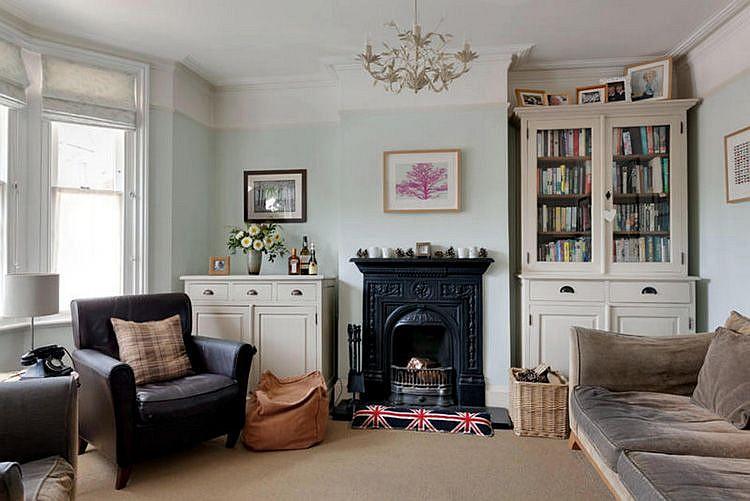
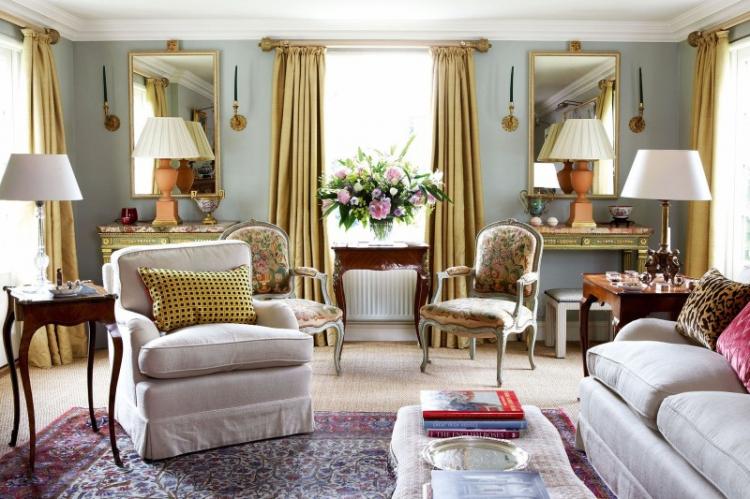
Lighting and illumination
The basis of any rich interior is an abundance of light, which gives a feeling of lightness and space. Then even a small room does not seem overloaded. The English style allows for classic massive chandeliers, wall sconces with horns and matte shades, tall floor lamps.
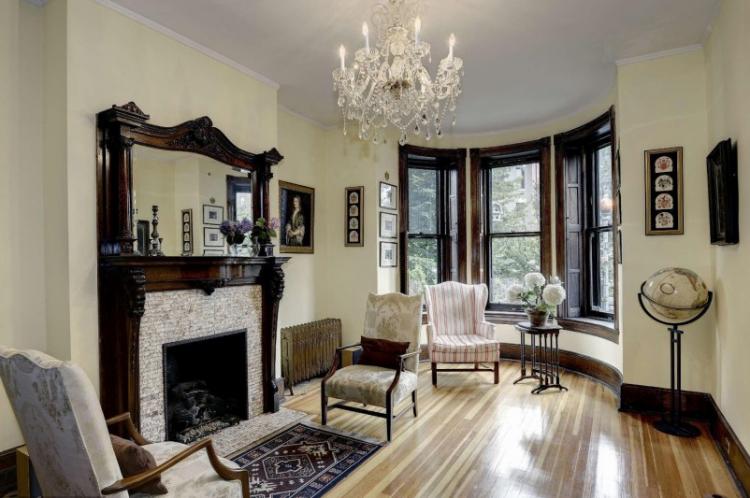
English style in the interior - photo gallery
The original and elegant English style can be integrated into the interior of any room. Large and spacious rooms will become truly luxurious, while small and cozy rooms will become bright and comfortable. We've put together some inspiration for you!
Kitchen design in the English style
Natural and poorly processed wood is not the best material for the kitchen. It is afraid of moisture, fat and temperature extremes. But tiles and natural stone are perfect. A marble countertop looks good on a wooden set. Large dining table in the center. A familiar classic - white glazed wardrobes.
The basis of home comfort is all kinds of textiles: tablecloths, napkins, pillows, potholders. Small items can be conveniently stored in woven baskets. Typical colors are white, warm gray, pastel yellow, cream, beige.
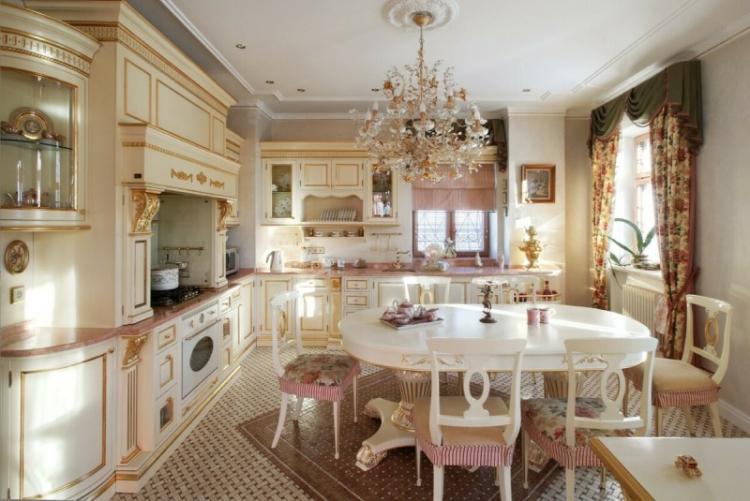
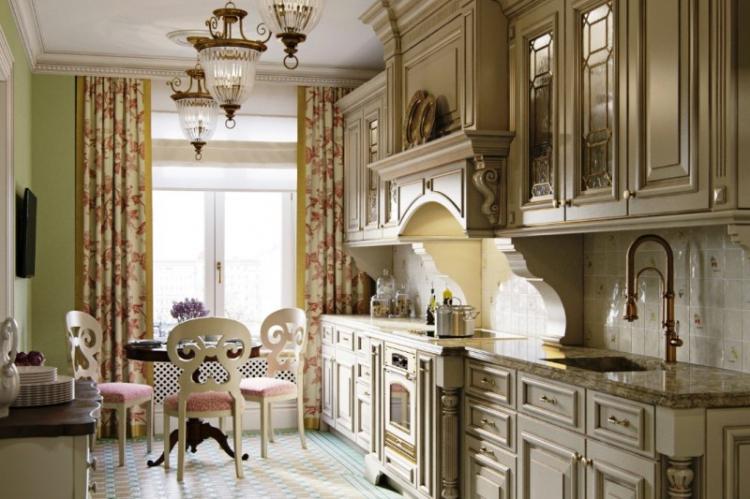
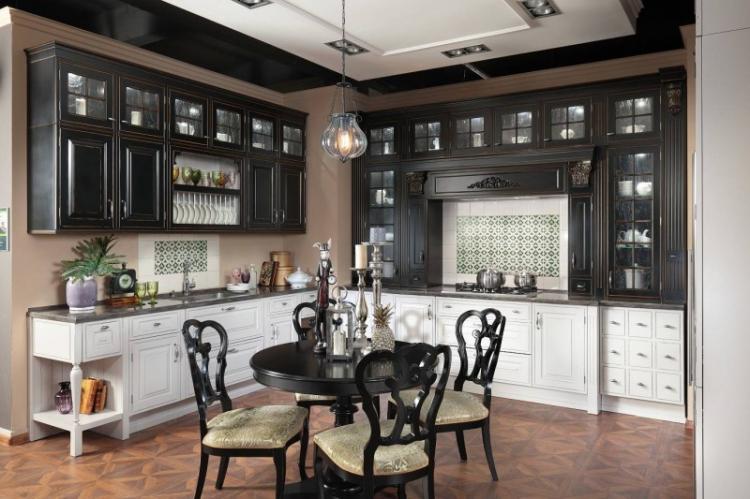
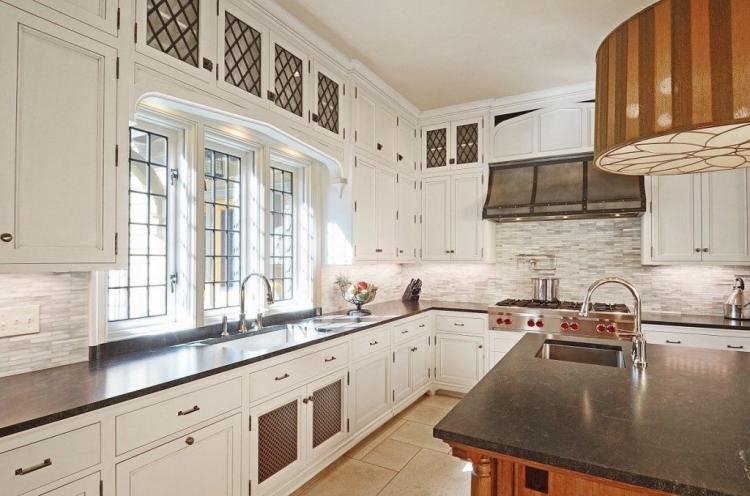
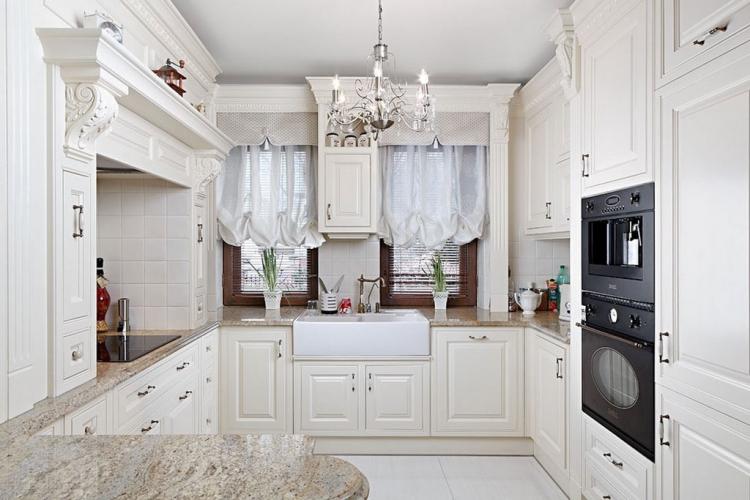
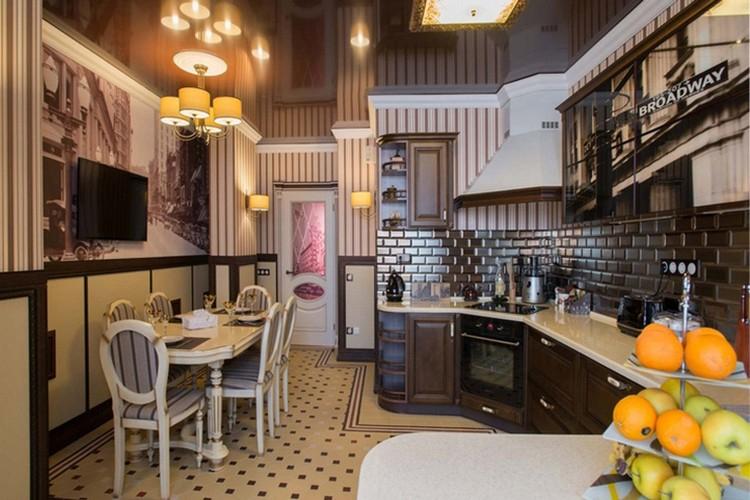
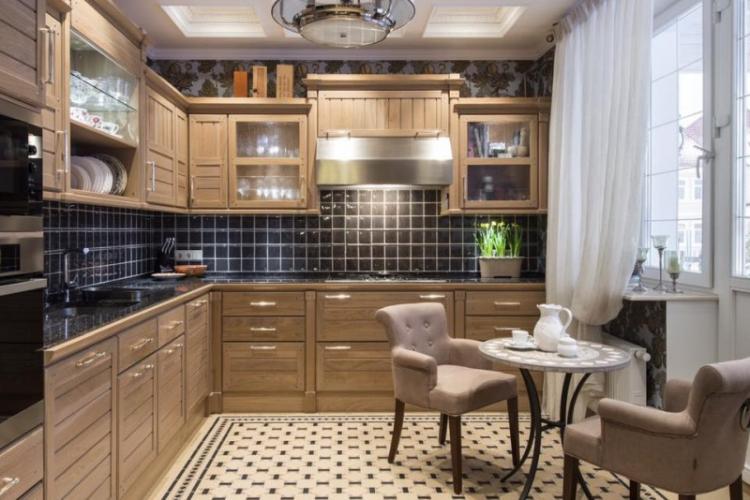
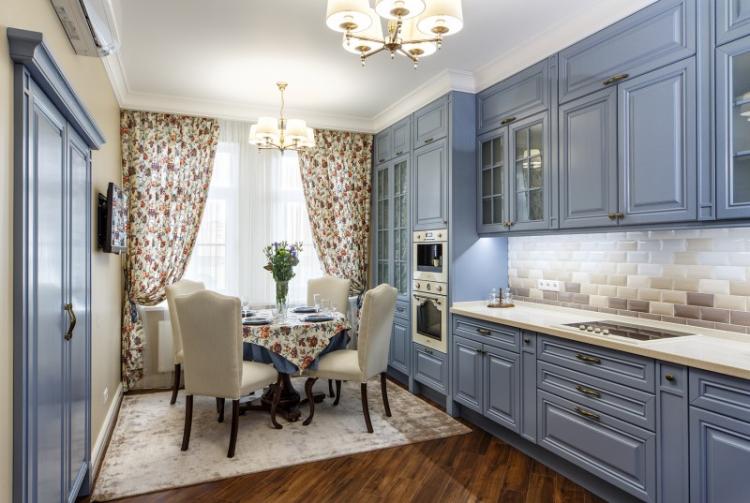
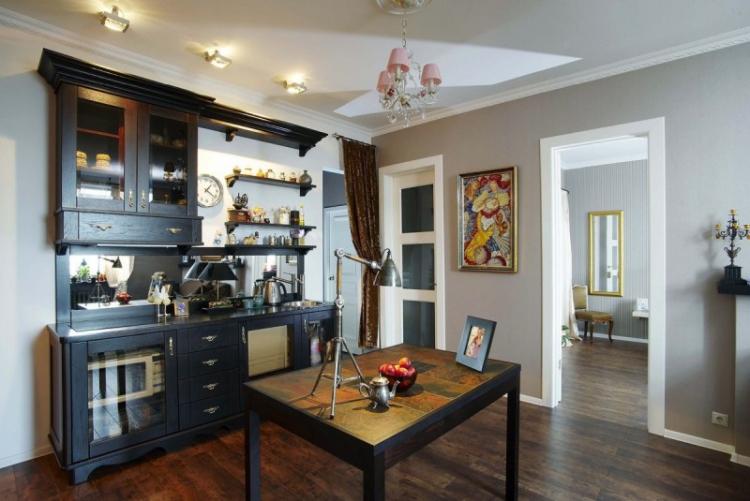
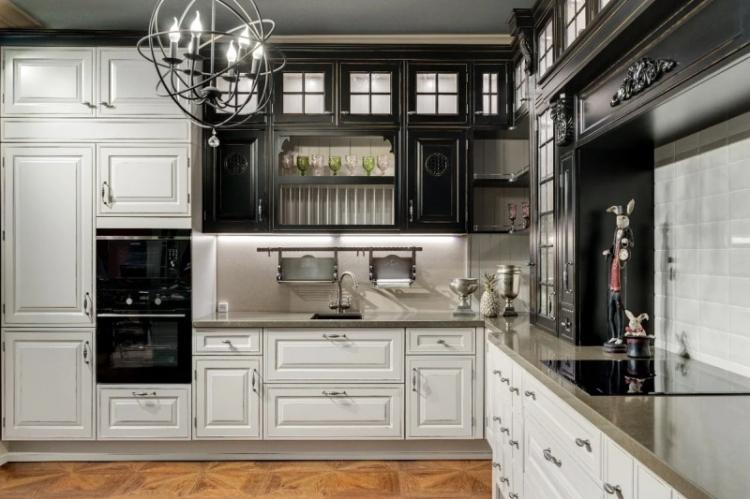
Living room design in English style
The predominant color of the living room in the English style is terracotta. Black and white combinations and dark green are actively used. The main piece of furniture is a massive Chesterfield sofa with quilted, often leather upholstery. A must-have accessory is a cozy plaid plaid blanket.
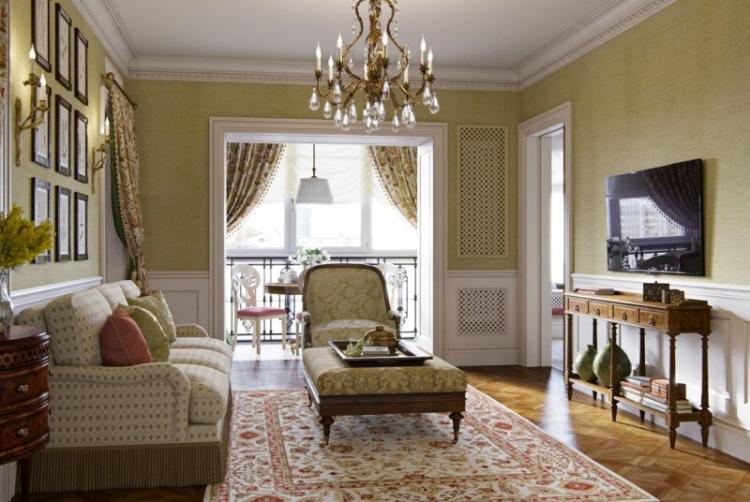
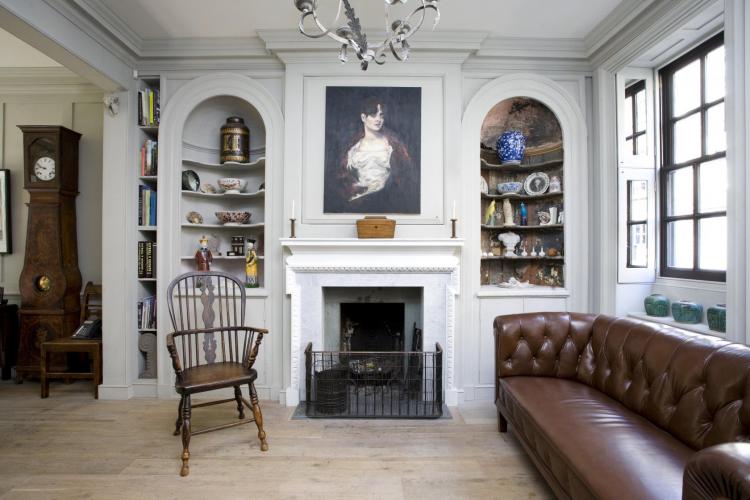
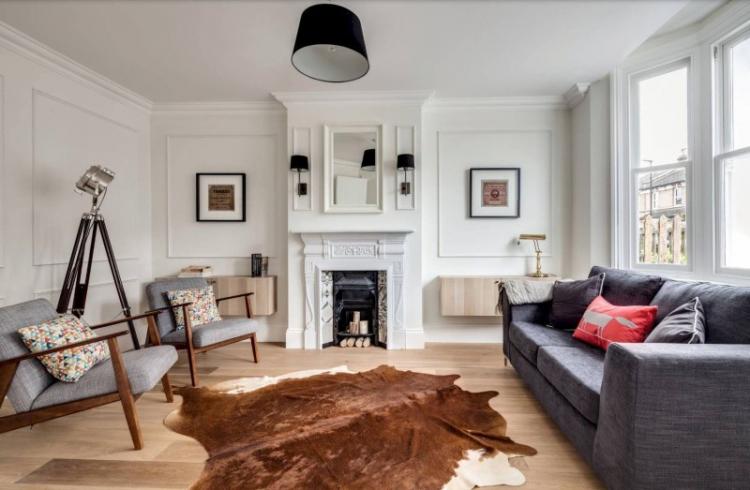
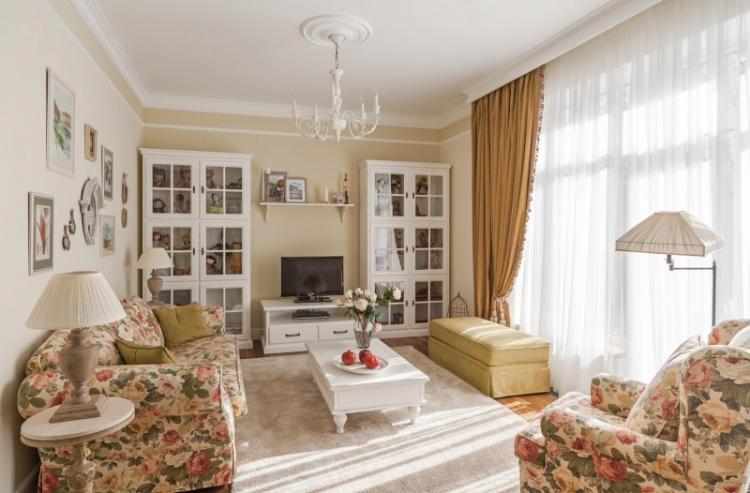
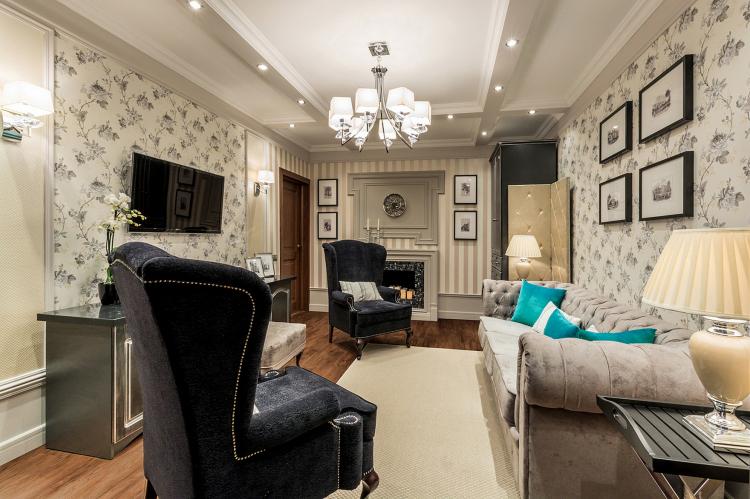
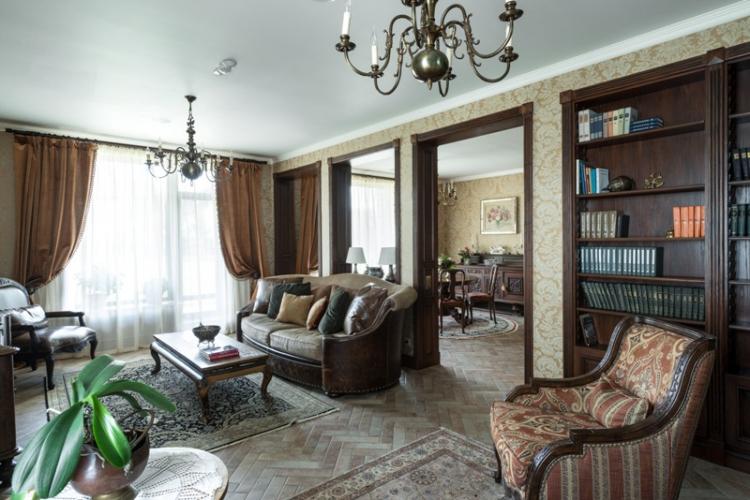
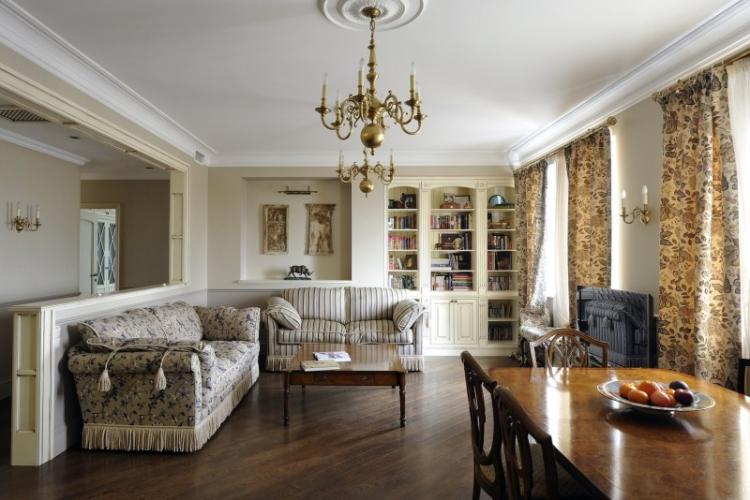
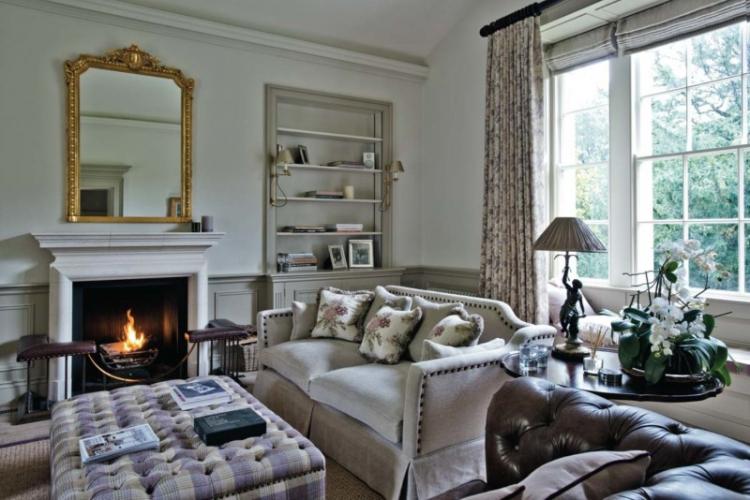
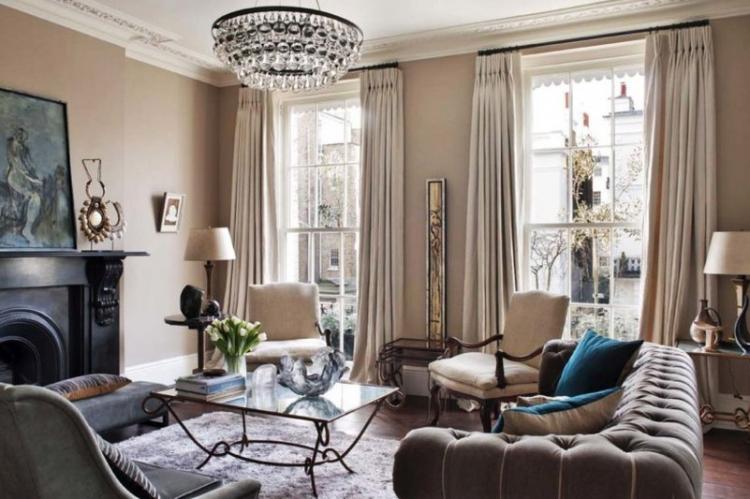
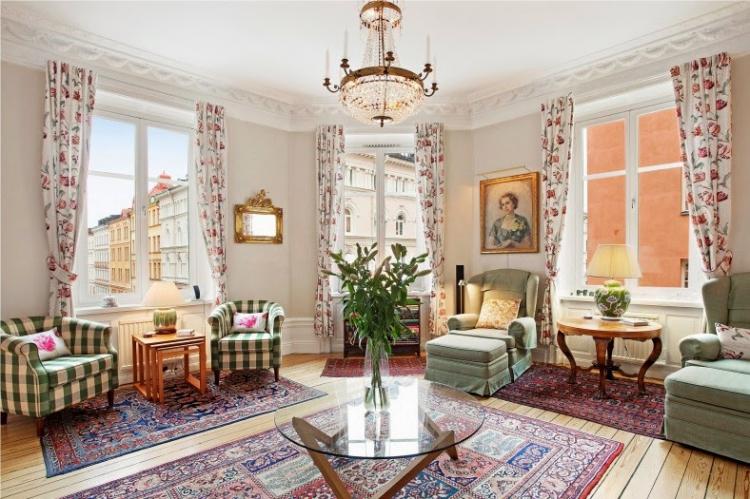
Bedroom design in the English style
The main accent of the English bedroom is a luxurious high bed. A high four-poster bed with a bed skirt is ideal. It will be complemented by linen in soft colors with a classic floral pattern and a quilted bedspread. A nice little thing - cozy bedside lamps on the bedside tables.
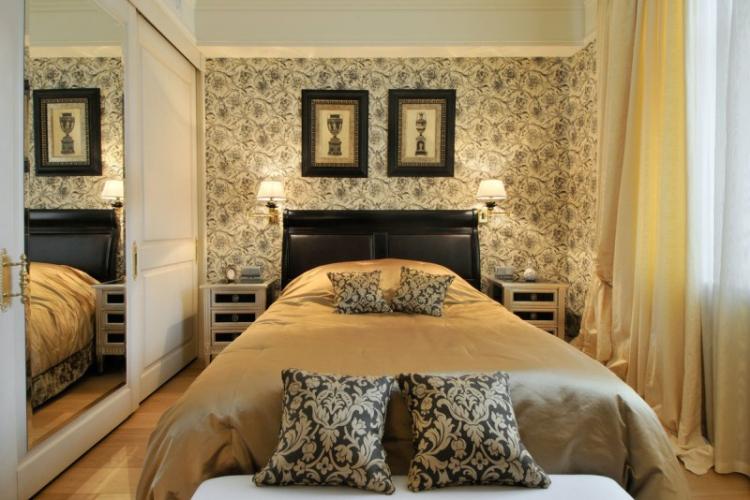
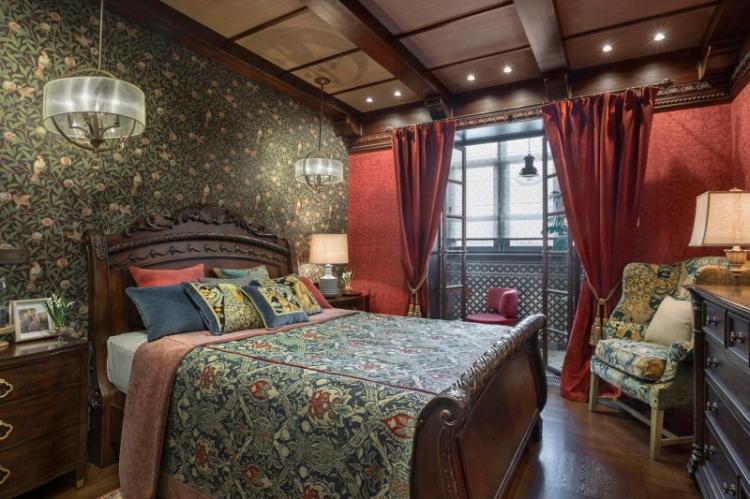
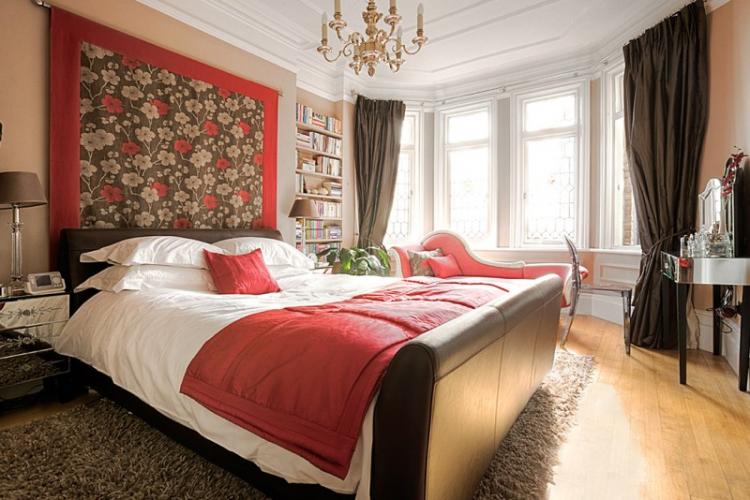
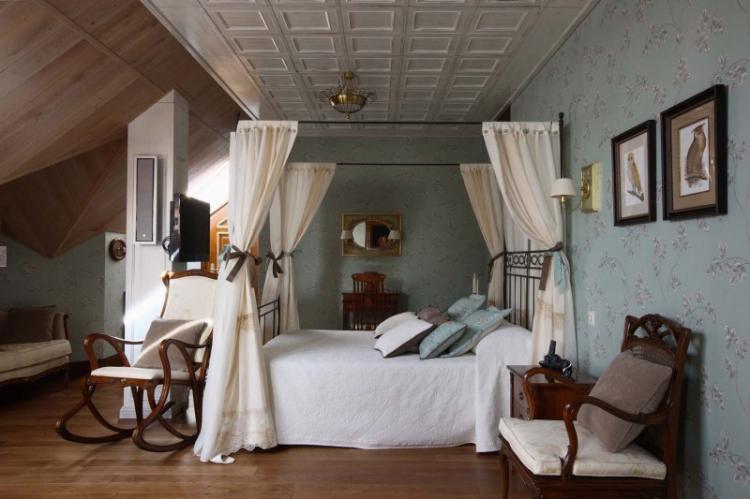
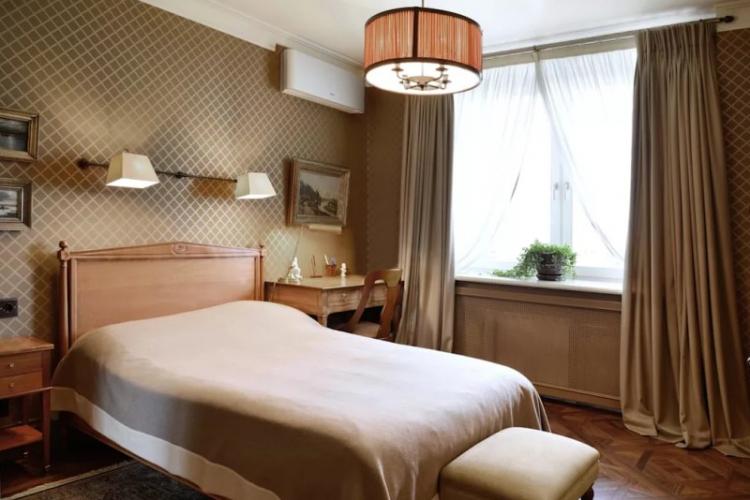
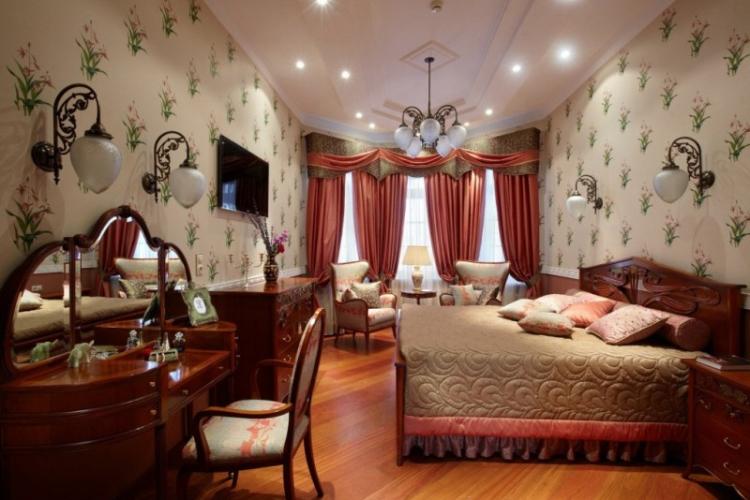
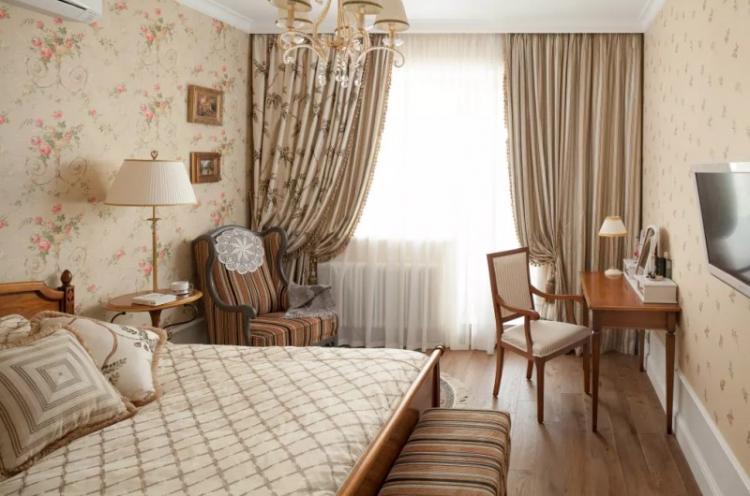
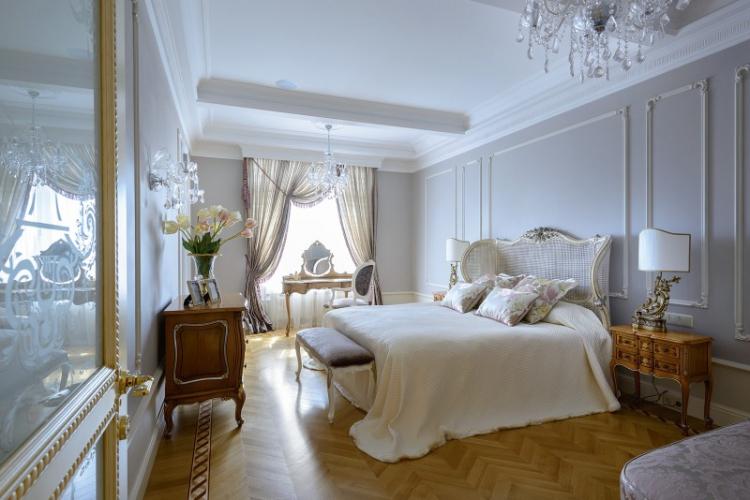
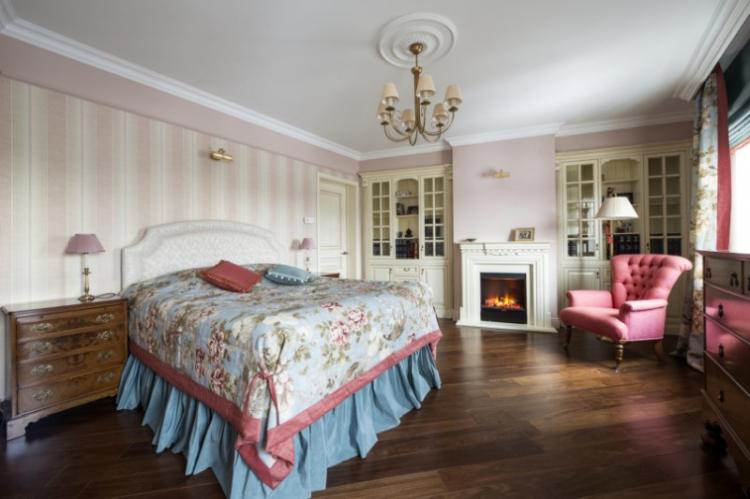
Bathroom design in the English style
Instead of wood, the bathroom is dominated by tiles. Plumbing, like furniture, is solid and solid. Oval bathtubs with curved legs are common.
Pay close attention to detail: faucets, taps, locks, handles, holders and other accessories. They create an atmosphere of sophistication and sophistication. An English-style bathroom must be spacious and light.
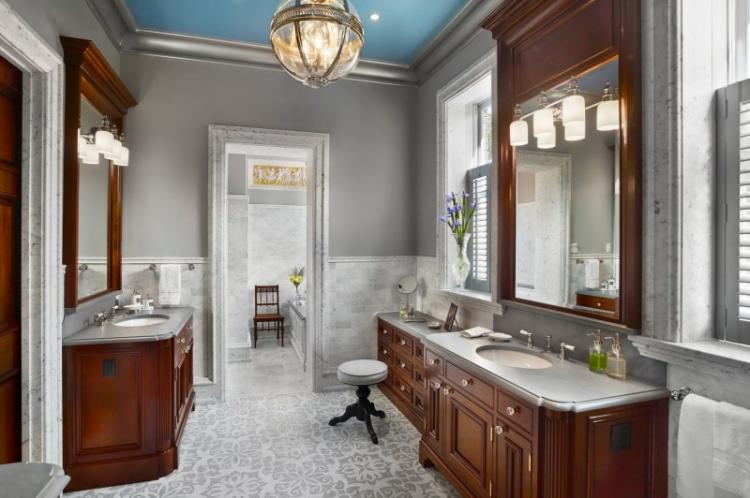

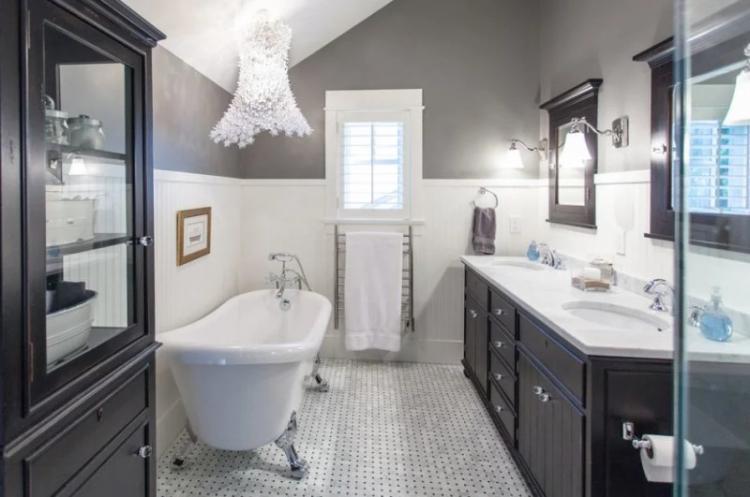
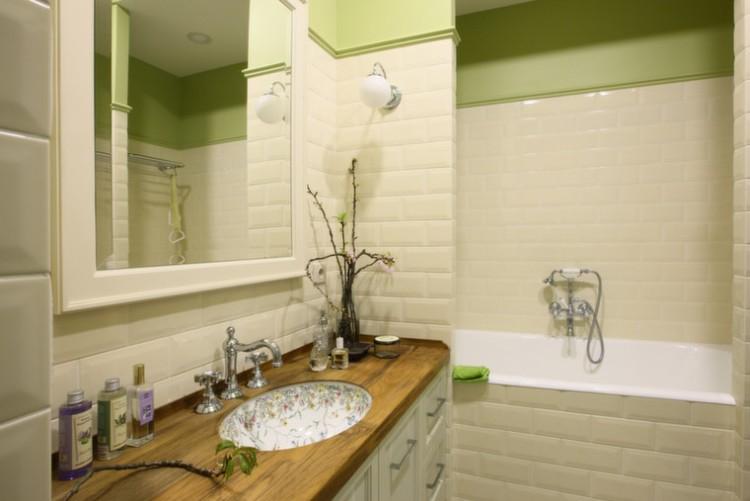
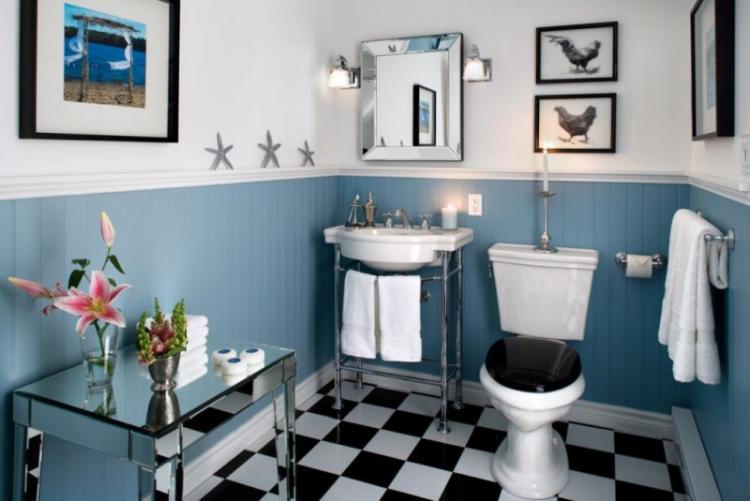
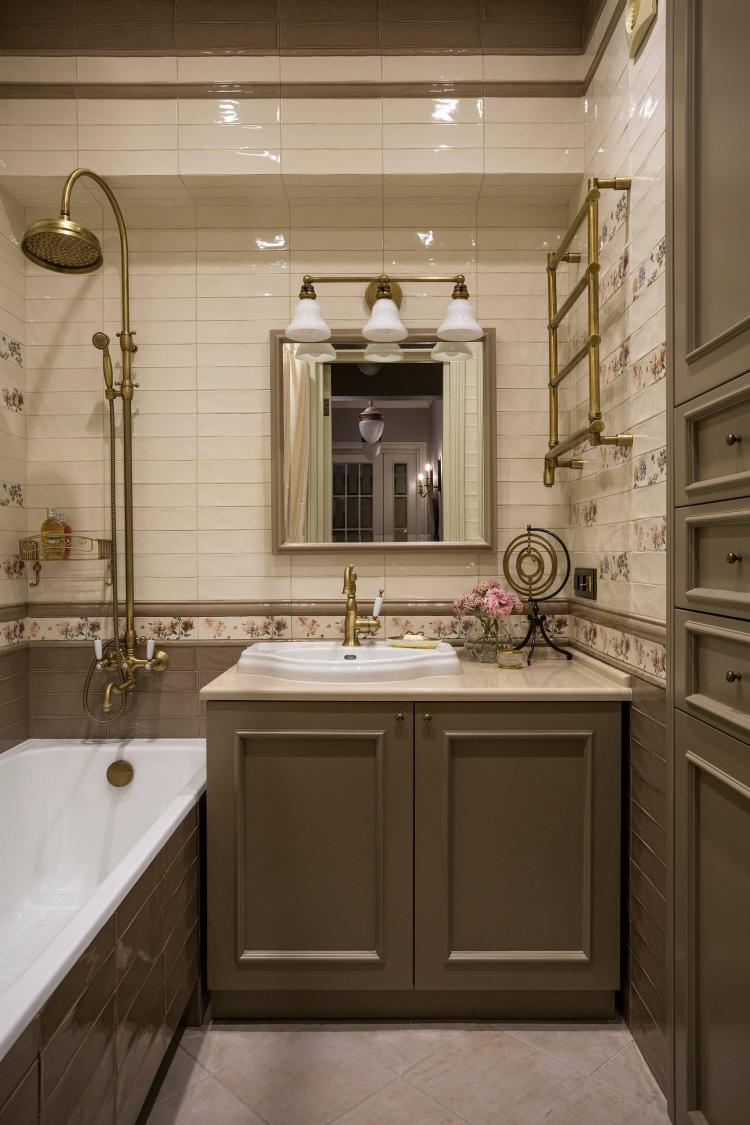
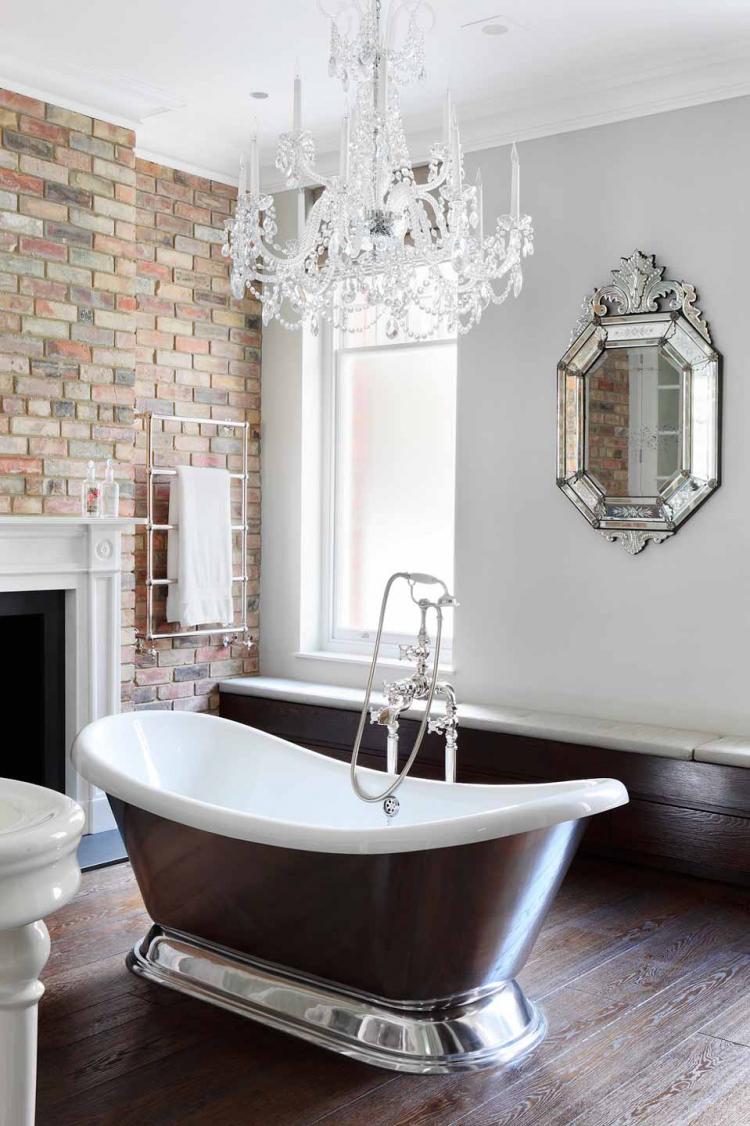
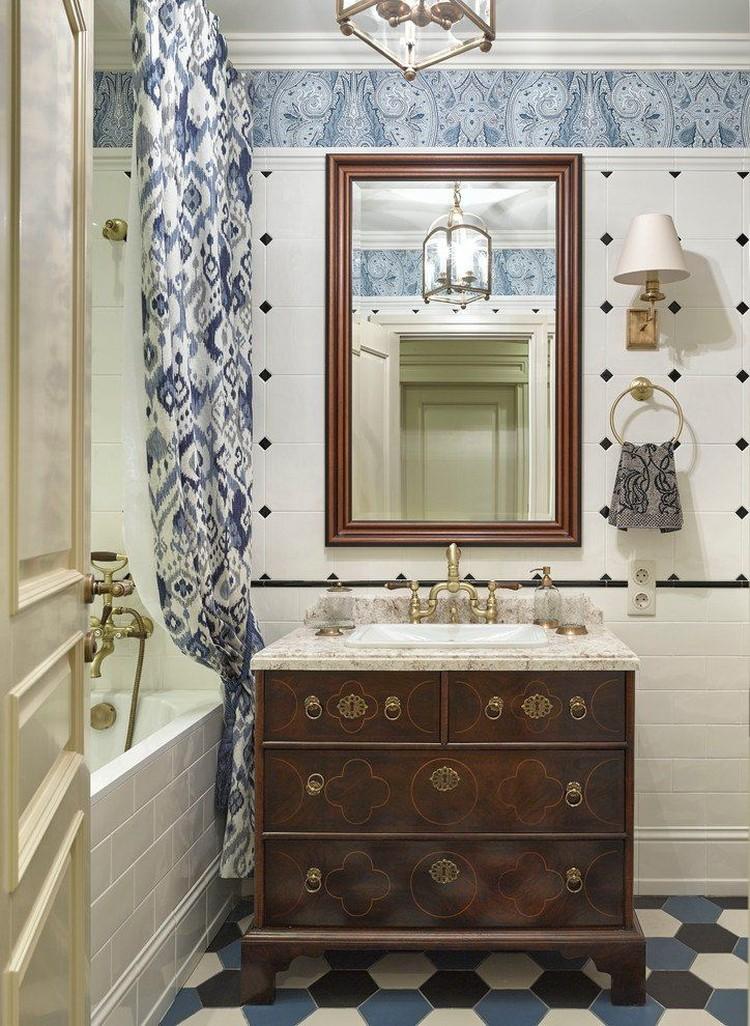
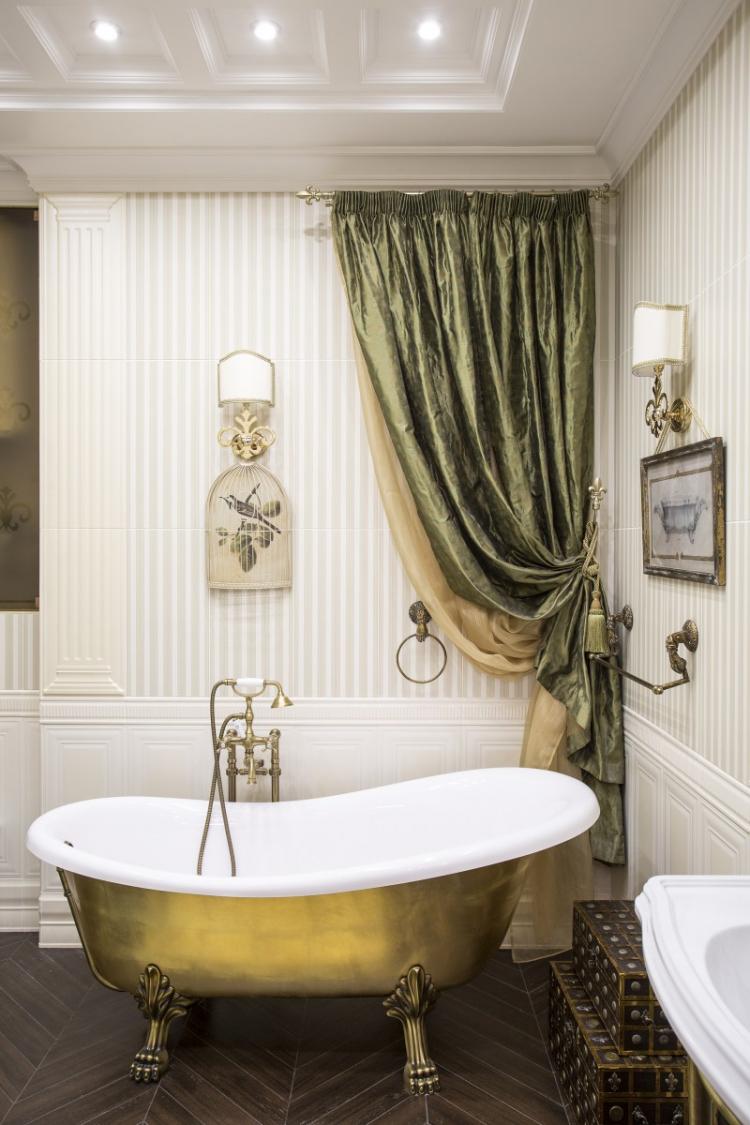
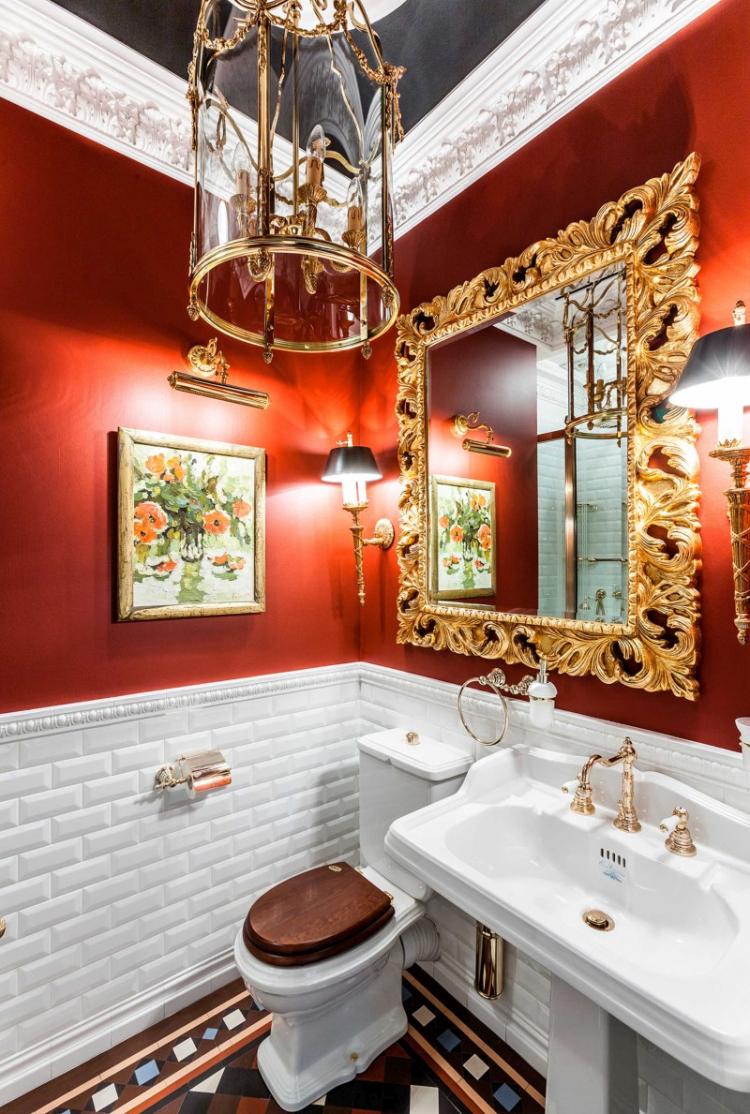
Children's room design in the English style
In the children's room, first of all, you will have to think over zoning. English interiors do not imply partitions, so you have to make do with lighting and furniture arrangement. The base is a bed with many drawers at the base. In fact, it replaces a full-fledged wardrobe.
The classic set of shades diversifies green, red, brick, and for girls - also floral patterns.Such a room evokes thoughts of an old castle, which will certainly delight a child. In addition, you can actively exploit the theme of adventure. Maps, globes, interesting books are a great motivation to explore the world around you.
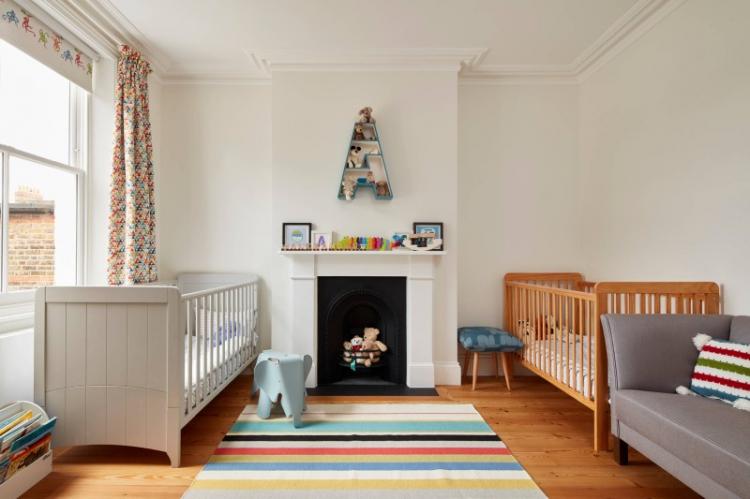
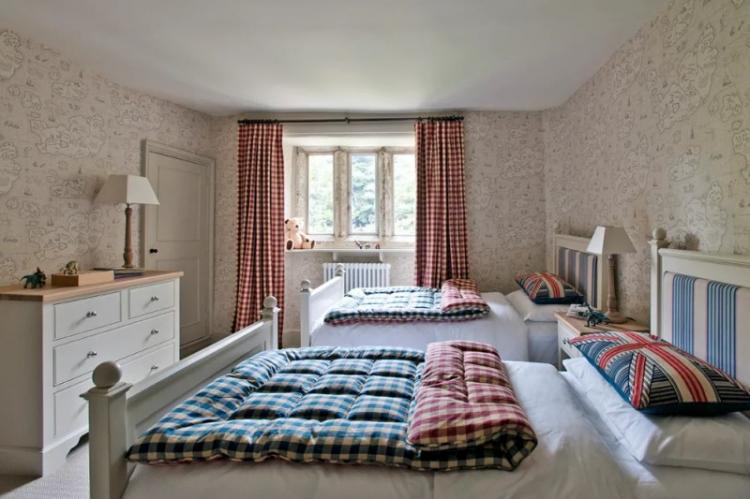
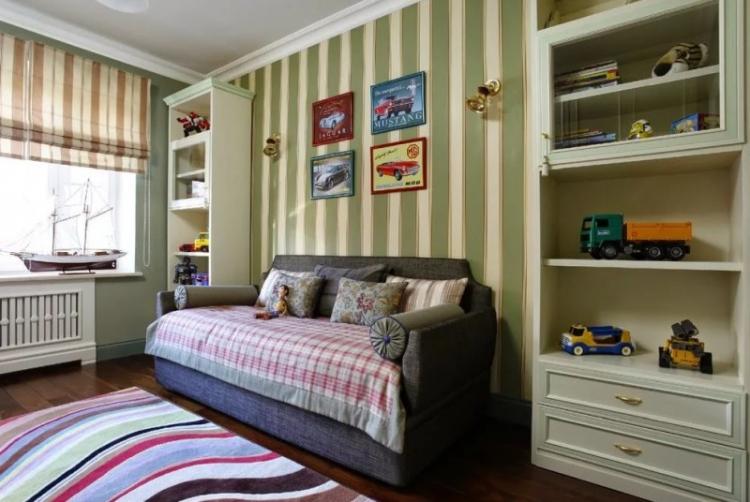
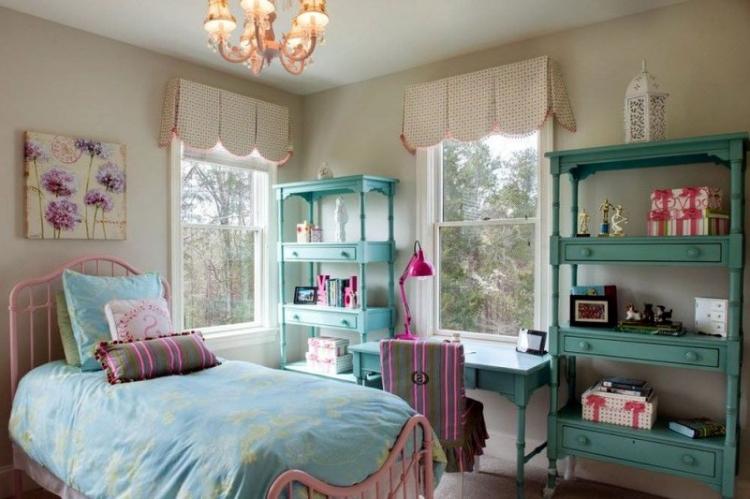
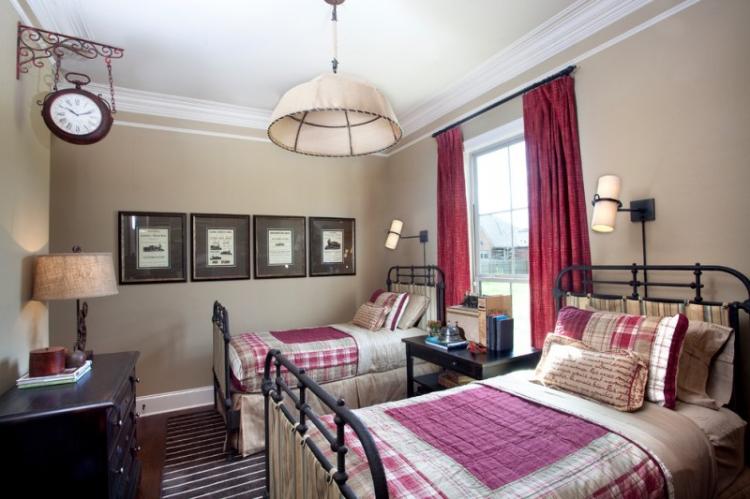
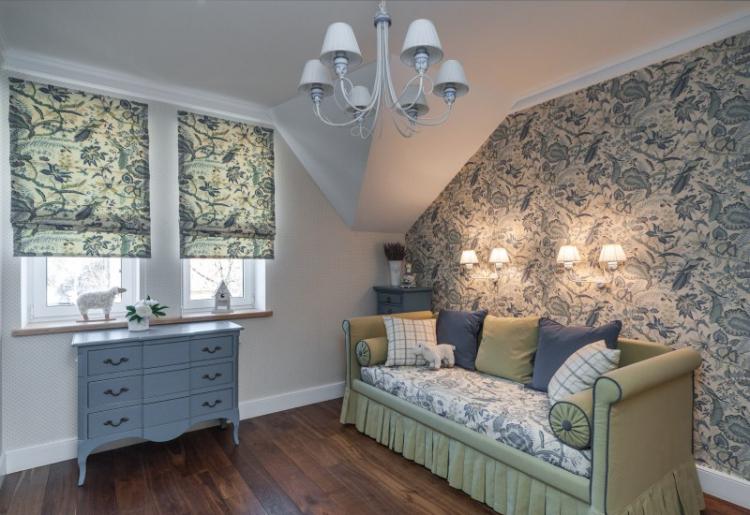
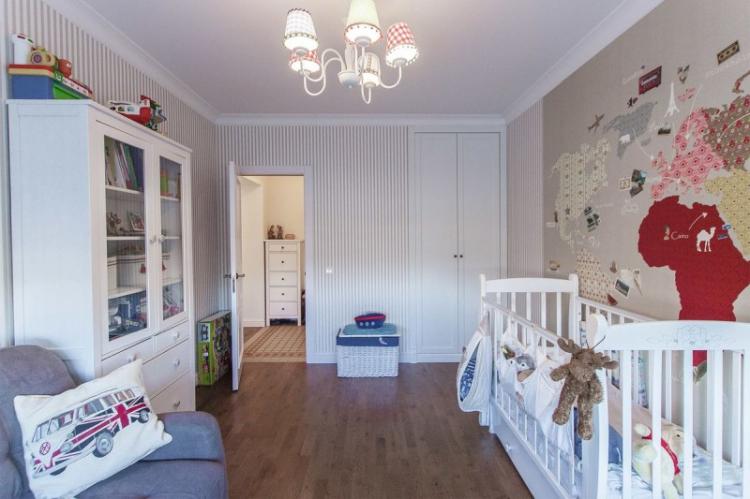
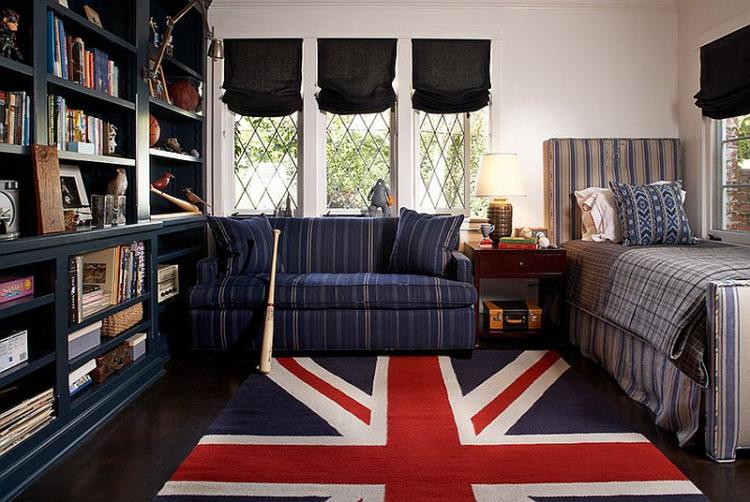
Hallway design in the English style
The hallway is the hallmark of the house. Antique but still functional furniture is in use here. Especially dressers with lockable drawers. Heavy curtains can be used instead of doors. Common shades are cream, honey, noble burgundy.
High wooden open racks are actively used. They can store your home library. If the house has a staircase, it should be wooden and contrasting. For example, dark steps with a white frame and railings. This is what gives it its characteristic English charm.
